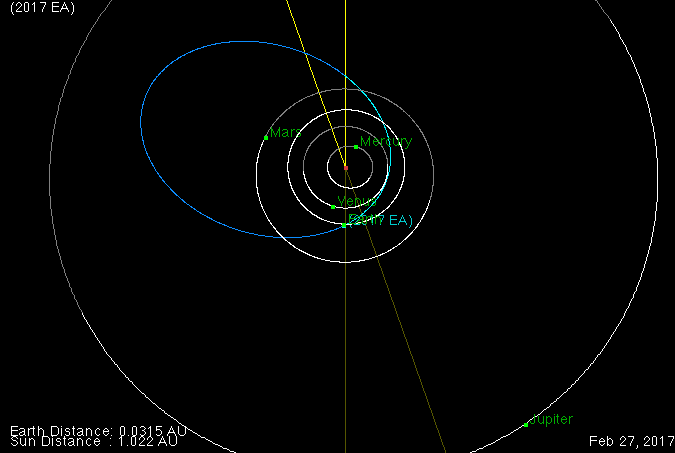NEOs are 'Near-Earth Objects' and may be either asteroids or comets, although the vast majority of known NEOs are asteroids. They are termed 'near-Earth' because their orbits either cross or come very close to intersecting Earth's orbit. Therefore NEOs can approach near-Earth space and as we know, occaisionally impact Earth. More formally, the orbit of an NEO has a perihelion (closest approach distance to the sun) less than 1.3 astronomical units (AUs). An asteroid NEO is termed an NEA (near-Earth asteroid), and technically a comet NEO is an NEC (near-Earth comet). Near-Earth comets must also have a perihelian less than 1.3 AUs, and have an orbital period less than 200 years. As of February 2021, there are over 25,000 known NEOs. More on NEOs available on JPL's Center for NEO Studies (CNEOS).
Animation below showing the near-Earth approaching asteroid 2017 EA. This asteroid is only about 3 meters (10 feet) wide, but grazed by the Earth soaring only 9000 miles (14,500 km) above the eastern Pacific Ocean on March 2, 2017. The asteroid was so close that its path carried it within the ring of man-made geosynchronous satellites that orbit our planet. Animation courtesy of JPL.




